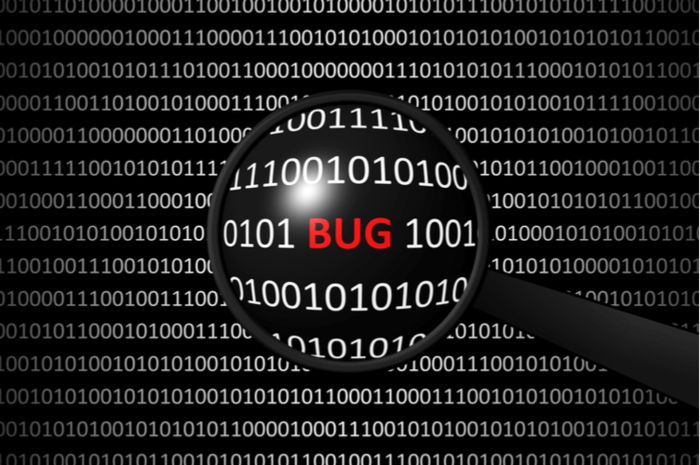In today’s world of software development, bugs are an unavoidable part of the process. While some bugs are trivial, others can be more severe and take up considerable time and effort to resolve. One such issue is the notorious 2579xao6 code bug, which has caught the attention of many developers due to its complex nature. In this article, we will explore the 2579xao6 code bug, its causes, how it impacts the development process, and most importantly, how you can fix it effectively.
Introduction to the 2579xao6 Code Bug
The 2579xao6 code bug has been frequently reported in a variety of software environments. It is commonly associated with application crashes, unexpected system behavior, and difficulty in performing certain tasks. The bug can be particularly frustrating because it is not always easy to pinpoint the root cause.
At its core, the 2579xao6 bug appears when certain sequences of events or conditions in the code trigger an error. Understanding the specifics of this bug is crucial for developers working to ensure smooth functionality in their applications.
What Causes the 2579xao6 Code Bug?
There are various factors that can lead to the occurrence of the 2579xao6 code bug. Some of the common causes include:
1. Syntax Errors in Code
One of the most basic causes of the 2579xao6 bug is a syntax error in the code. Developers may inadvertently miss a semicolon, use incorrect variable names, or misuse operators, leading to issues during code execution. These small mistakes can quickly escalate into bigger bugs.
2. Mismanagement of Memory Allocation
Another common reason for encountering the 2579xao6 code bug is poor memory management. Improper allocation, deallocation, or access to memory can result in the bug being triggered, especially in languages like C and C++ where manual memory management is required.
3. Data Type Incompatibility
In many cases, the 2579xao6 bug occurs when there is a mismatch between expected and actual data types. If the data passed into a function does not match the expected type, it may result in unexpected behavior, crashes, or other errors that are difficult to debug.
4. Race Conditions and Threading Issues
For applications that rely on multi-threading, race conditions are a significant cause of the 2579xao6 code bug. When multiple threads attempt to access shared resources simultaneously, without proper synchronization mechanisms, it can cause inconsistent results, crashes, or failures.
5. API and Library Conflicts
Sometimes, the 2579xao6 bug is not due to the developer’s code but stems from issues with third-party APIs or libraries. Incompatibilities between different versions of a library or API can lead to errors and bugs, which can be difficult to track down without a thorough understanding of all the components involved.
Symptoms of the 2579xao6 Code Bug
Identifying the symptoms of the 2579xao6 code bug is crucial for developers who want to catch it early and resolve it efficiently. Some of the common symptoms include:
1. Application Crashes
One of the most noticeable signs of this bug is when the application crashes unexpectedly. This may happen when a certain function or feature is accessed, or it may occur randomly, depending on the underlying cause of the bug.
2. Slow Performance
Another common symptom is slow performance or a delay in response times. The bug may cause certain processes to hang, leading to performance degradation in the application.
3. Inconsistent Output
If the 2579xao6 code bug is present, developers may notice that the output of the application is inconsistent. The application might produce correct results one time, but fail the next, making it hard to diagnose the issue.
4. Unusual Errors or Warnings
Developers may also see strange error messages or warnings in the console that don’t seem to relate to the code they have written. These messages can sometimes be indicative of the 2579xao6 code bug, especially if they appear sporadically.
How to Troubleshoot the 2579xao6 Code Bug
When you encounter the 2579xao6 code bug, the first step is to begin troubleshooting systematically. Below are some useful steps to help identify the root cause:
1. Check the Error Logs
Begin by checking the error logs. These logs can often provide clues as to where the problem lies. If the logs point to a specific line or function, this can be an excellent starting point for further investigation.
2. Isolate the Bug
Isolate the section of the code where the bug occurs. You can do this by commenting out certain sections of the code or using print statements to track the flow of execution. Once you narrow down the problematic area, it becomes easier to investigate the underlying issue.
3. Use Debugging Tools
Most development environments offer powerful debugging tools that can help track down bugs. Use breakpoints, step through the code, and inspect variables in real-time to better understand where things go wrong.
4. Check Dependencies and Libraries
If the bug is related to an external library or API, ensure that the correct versions are being used. Incompatible or outdated dependencies can often lead to unexpected behavior.
5. Test Different Scenarios
Testing your application in different environments, such as staging or production, can also help identify if the bug is specific to one setup. Testing various edge cases is important to confirm that your application functions properly across all scenarios.
Resolving the 2579xao6 Code Bug
Once the 2579xao6 code bug has been identified, you can take steps to fix it. Here are some common strategies for resolving this type of bug:
1. Refactor the Code
If the issue is due to poor coding practices, refactoring the code can help resolve the bug. This may include simplifying complex functions, reducing nested loops, or ensuring that proper memory management practices are in place.
2. Update Dependencies
If the bug is caused by an outdated library or API, ensure that all dependencies are up to date. Many bugs stem from using older versions of software components that may no longer be compatible with newer versions of the application.
3. Implement Proper Synchronization
For issues related to multi-threading and race conditions, proper synchronization techniques, such as using mutexes or locks, can help avoid the 2579xao6 code bug. Ensure that shared resources are properly protected from concurrent access.
4. Improve Error Handling
Improving error handling can prevent the 2579xao6 code bug from causing significant issues. This includes validating inputs, checking for null values, and providing meaningful error messages when something goes wrong.
5. Use Unit Tests
Using unit tests to verify that your functions are working as expected can help catch bugs early in the development process. Write tests that cover all edge cases and scenarios to ensure that your application behaves as intended.
Preventing the 2579xao6 Code Bug in the Future
While fixing the 2579xao6 code bug is important, it’s equally essential to take steps to prevent it from occurring again. Here are some best practices to reduce the risk of similar issues in the future:
1. Write Clean and Maintainable Code
Writing clean, well-documented, and maintainable code can help prevent future bugs. Follow coding standards, use descriptive variable names, and break complex logic into smaller, reusable functions.
2. Perform Code Reviews
Conduct regular code reviews to ensure that potential issues are caught early. Having another set of eyes look at your code can often uncover bugs that you might have missed.
3. Keep Dependencies Updated
Regularly update your application’s dependencies to ensure they are compatible with the latest versions of your development environment. This can prevent issues that arise due to outdated libraries or APIs.
4. Utilize Static Code Analysis Tools
Static code analysis tools can help identify potential bugs, security vulnerabilities, and performance issues in your code before they cause problems. These tools can be integrated into your build process for continuous monitoring.
5. Implement Comprehensive Testing
Implement automated tests, integration tests, and end-to-end tests to verify that your application is functioning correctly. This can help catch issues before they reach production and save valuable debugging time.
Conclusion
The 2579xao6 code bug is a complex issue that can cause significant disruptions in the development process. However, by understanding its causes, symptoms, and troubleshooting steps, developers can more effectively diagnose and resolve the problem. Remember to write clean, maintainable code, stay updated with your dependencies, and test thoroughly to prevent similar bugs in the future.
By following the strategies outlined in this article, developers can minimize the impact of the 2579xao6 code bug and ensure a smoother, more efficient development process.


